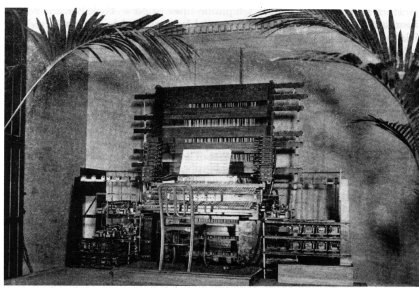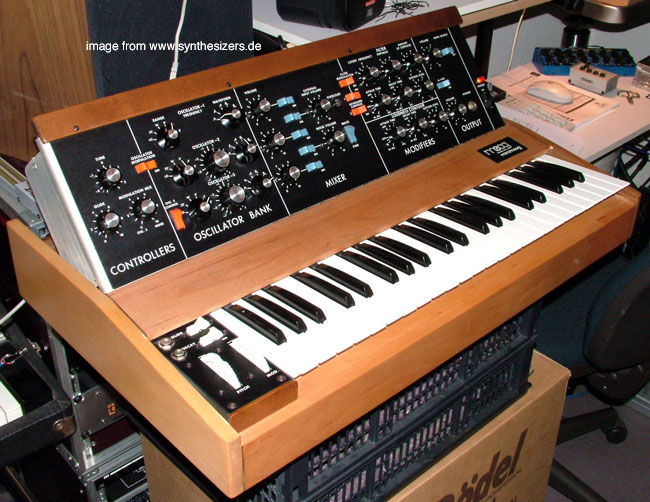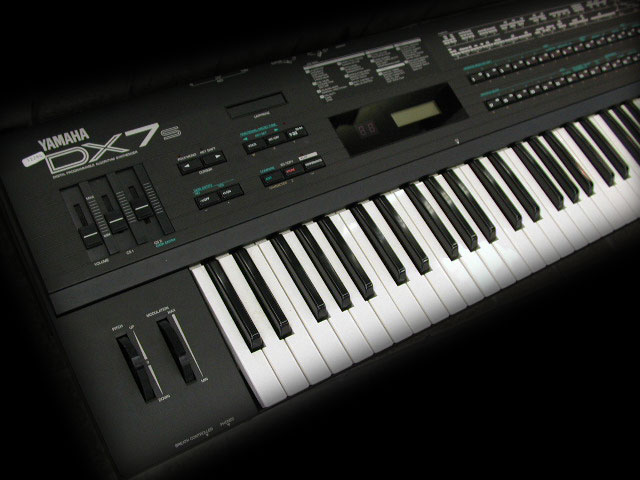The oldest synthesizer known is the Telharmonium, whose origin is in 1900. In 1920 Dr. Carl Emil invented the audiometer, which works by electronically generated tones, and recommends a future of new electronic sounds. Leon Theremin created in 1923 the first of what may be called musical instruments, the Theremin. Their motto is "The instrument that is played without being touched,"because the sound is generated by oscillators whose frequency varies when you zoom in one hand a kind of antenna. In the same period is the martenot wave generator, designed by Maurice Martenot in 1928 with the intention to overcome certain limitations of the piano. This is already an instrument controlled by a keyboard and also allows control by a ring that enables glissando and vibrato.
 |
| Telharmonium |
More information about the theremin here:
http://allaboutsynths.blogspot.com/2012/04/theremin.html
Later appears the martenot generator, such as the ondiline andtrautonium. The ondiline and is based on a kind of sawtooth oscillator andfrequency dividers allowing a further additive synthesis. The trautonium is the precursor of the voltage-controlled instruments (Moog will use later), and coulddivide eighth different tones in 1200. In 1939 in New York presents an instrument called Voder, a real synthesizer in the modern sense, but designed to reproducethe spoken word. In 1948 appears the concept of musique concrete, which is nothing more than the manipulation of concrete sounds, natural and electronic equipment mounted on magnetic tape. In 1955, under the sponsorship of the RCAsynthesizers are built Mark I and Mark II. One of them still works and is about 5 mlong and 2 meters high. It works with a band of perforated paper where the authorencodes the parameters of the sound to be generated.

RCA MARK II
The Mark II can not play music in real time, but perfectly imitate many conventional instruments. In those years, multitrack recording on magnetic tape was not developed and used for recordings multisurco discs. Then mixed in a final thosegrooves. In these models is introduced using the white noise necessary to mimicthe dishes or cymbals. During this time, are widely used 78-rpm discs whererecordings were made at different speeds and multiple pickups readings and recordings in endless rows for repetitive sounds.
The synthesizers only began to become popular during the 1960s. Its development took place mainly in the electronics laboratories of universities in theUnited States. There, a few pioneers like Dr. Robert Moog synthesizers and builtprototypes were demonstrated. Moog modular synthesizer built the first, it startedwith a fever that lasts to this day.
The modular moog synthesizer was formed from the combination of differentmodules, so that its structure was not always the same. Each module controllingcertain functions. As the modules are sold separately, each moog could be configured according to specific needs that each musician demanded. The possibilities were almost endless, and each sought the desired configuration.Obviously, Moog was not alone and soon left other companies offering modularsynths, including the ARP company, with its model 2600. |

Arp 2600 |
|
 |
Minimoog
The first Moog Modular was assembled in a huge closet. The various circuits that generated and filtered sound is connected by wires that could be exchanged, as if it were a telephone exchange (as in the patches). The core module of the synthesizer was the low pass filter (low pass high frequencies leaving only serious depending on the limit (cutoff frequency) preset with the potentiometer.Since its first version, moog exceeded the benefits to the RCA marketed prototype (developments from their MARK I and II). In addition, the moog was much cheaper. It cost $ 11,000 compared to 100,000 of a prototype of the RCA.At first, the synthesizer was seen as purely experimental and elitist, perhaps by the fact that only some avant-garde artists dared to compose music for synthesizers made.In 1968, a musician named Walter Carlos (who after a sex change operation was renamed Wendy Carlos) in collaboration with Moog recorded a series of works by Johann Sebastian Bach in an album called Switched-on Bach (known inSpanish-speaking countries such as Bach E) using a modular Moog synthesizer and a 4-track recorder. The album was received with unusual attention, sold hundreds of thousands of copies, was the first album of music learned to earn a Grammy award and the first album learned to sell a million copies and proved to the public that the synthesizer could be adapted to traditional music.With the emergence of a new market makers designed smaller models like the Minimoog, also began to appear factories in Japan with brands such as Roland and Yamaha. The new musical styles of the '70s, such as progressive rock, demanded new sounds and synthesizer was adopted with gusto. Some of the heroes of synthesizers of the 70 were Keith Emerson of Emerson, Lake & Palmer (using the Modular Moog), Rick Wakeman of Yes (using the MiniMoog) and Tony Banks of Genesis (Using the ARP2600).
Digital synthesizers
So far the synthesizers were used to add new sounds to existing instruments. But with the advent of digital technology it was possible that they began to emulateexisting instruments such as vibraphones and electric pianos. At this time, was born what is now considered the electronic music pioneers like the hand of the German group Kraftwerk. This is somewhat repetitive, robotic music almost exclusively produced by synthesizers. Led electronic music subgenres liketechnopop or synthpop, which highlighted bands like Depeche Mode, OrchestralManoeuvres in the Dark, Ultravox, Alphaville, The Human League, Erasure, SoftCell, Gary Numan, Pet Shop Boys and more today bands like Destroyer, TheRussian Futurist or the Spanish Limousine.
In 1983 he adapted the MIDI interface that allowed different brands ofsynthesizers communicate and record what is played on a machine called asequencer. This revolutionized the way of making music since anyone could program but not a good performer. The synthesizers most representative of this era are the Yamaha DX7 and Roland D-50. |
 |
Yamaha DX7
|






No hay comentarios :
Publicar un comentario